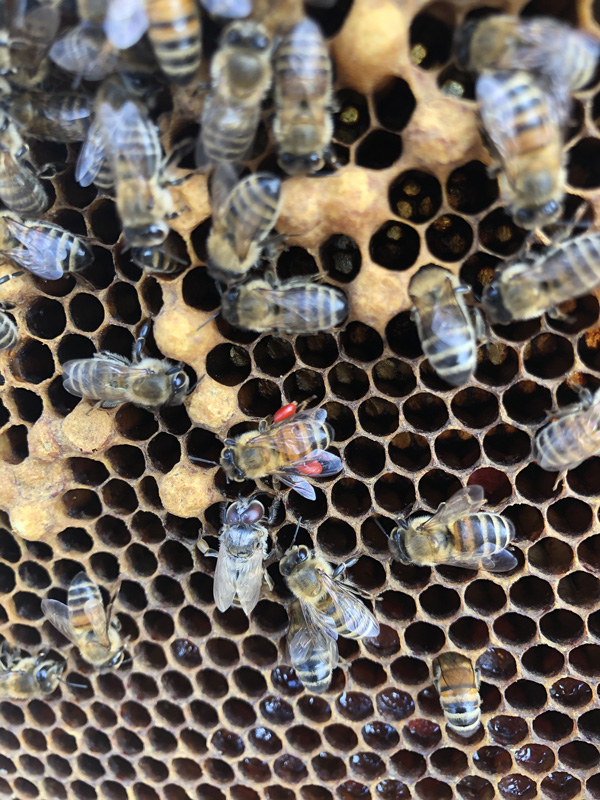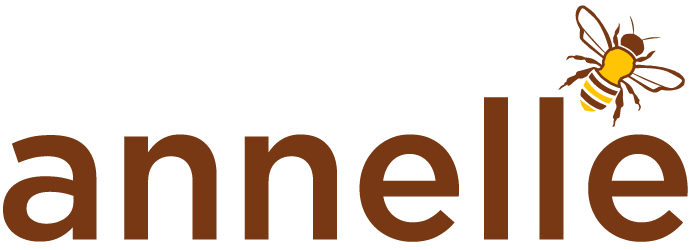
I really enjoy watching bees bring pollen into the hive. It is such a joy this time of year to see their little bee baskets filled with all different colors of pollen from red and orange to purple and grey. One my favorite games in beekeeping is trying to determine what plant the pollen originated from. The tiny little body of the bee is covered in 3 million hairs that help to attract pollen. Bees have several different types of the hairs. Some hairs have branches on them to help efficiently hold the pollen, another type are straight and serve a sensory receptors and a third type are long and stiff that hold pollen. The third type are located on the back legs and are usually referred to as pollen basket hairs.
The bees will groom their bodies with their front legs, and move the pollen attached to their branched hairs into their pollen baskets. It is so cute when they do this grooming practice because they look kind of like a cat grooming itself. They will sometimes use a little nectar to help the pollen stick in a ball which makes it easier to fly with. Pollen serves as a wonderful source of food for the baby bees. The bees will pack the pollen into the wax comb cells, and add a bit of their own glandular secretions and honey to help the pollen ferment. Fermented pollen is much higher in vitamins, and much easier to digest. We refer to fermented pollen as bee bread because it is like the bees’ version of our sourdough bread. If you purchase bee pollen from someone, it is best to eat with yogurt to help the pollen ferment a bit so that its nutrients are more readily available.
It is really important for bees to have rich sources of pollen at this time of year because they are beginning to raise baby bees, and the weather can change quickly. If you would like to help out the honey bees and native bees, here are some great plants that flower early: Crocus, Dandelion, Borage, Willow and Red Maple.

